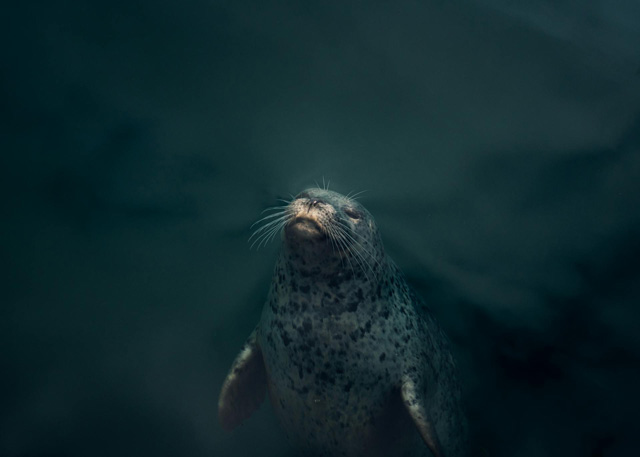As much as I love whales, I know that Montauk isn’t just about whales. Its surrounding waters are brimming with diverse marine life, from playful dolphins and curious seals to majestic pelagic birds. Every trip to the coastline reveals something new and awe-inspiring, which makes Montauk a haven for nature lovers and wildlife enthusiasts like me.
Let’s go in deeper and find out more about some of the marine life in Montauk, NY.
Key Takeaways
- tauk offers a diverse range of marine life beyond whales, including dolphins, seals, and a variety of bird species.
- Bottlenose dolphins and short-beaked common dolphins are frequently spotted, showcasing their playful behavior and social interactions.
- Harbor seals and gray seals are common in Montauk’s waters, especially during the cooler months.
- Montauk is a birdwatcher’s paradise, with pelagic birds like northern gannets, shorebirds, raptors like ospreys, and even occasional sightings of bald eagles.
- Marine life in Montauk changes throughout the year, with different species appearing in each season.
- Maintaining safe distances, minimizing noise, avoiding feeding wildlife, and supporting conservation efforts are crucial for responsible wildlife viewing.
Dolphins in Montauk Waters
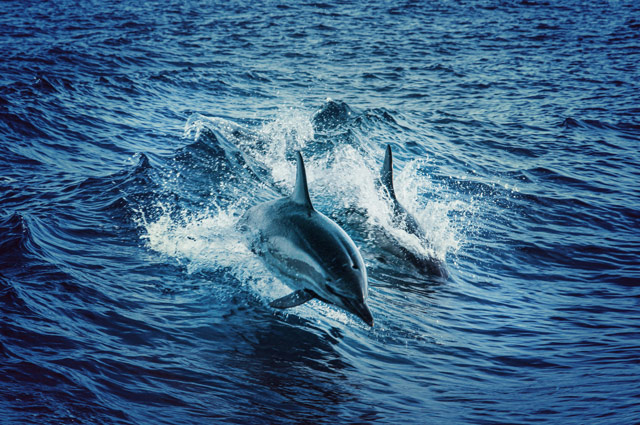
If you’ve ever seen dolphins gliding gracefully alongside a boat, you know just how magical the experience can be. In Montauk’s waters, dolphins are a common but always thrilling sight. Every time I spot one, I’m reminded of their beauty, intelligence, and connection to the ocean. Let’s dive into what makes dolphin watching in Montauk so special.
Behavior
Dolphins are some of the ocean’s most fascinating creatures, known for their incredible intelligence and playful personalities. I’ve seen dolphins leap high out of the water, spin in mid-air, and even “surf” the waves created by our boat. Their acrobatics aren’t just fun to watch—they’re also part of how they communicate and interact with one another. You’ll often find them swimming in pods, working together to hunt or just play. Their cheerful behaviors and sleek, streamlined bodies make them a highlight of any marine excursion.
Best Time to Spot Dolphins
In Montauk, the best time to see dolphins is during the summer months when the warmer waters attract pods closer to the shore. Early morning tours are especially promising because the ocean tends to be calmer, making it easier to spot these swift swimmers. Dolphins are active throughout the day, but the tranquil morning seas can amplify the joy of watching them in action.
Tips for Dolphin Watching
- Go early: Early morning tours increase your chances of seeing dolphins and provide the best lighting for photos.
- Keep your eyes on the horizon: Dolphins often travel just below the surface, so watching for their characteristic dorsal fins or splashes can help you spot them.
- Use binoculars: While dolphins often approach boats, binoculars can help you spot pods in the distance for an even longer viewing experience.
Dolphin Species to Watch For
Bottlenose Dolphin
When you think of dolphins, you’re probably picturing the bottlenose dolphin. These iconic marine mammals are frequently seen near Montauk’s shores, especially during the summer. They’re highly social animals, traveling in pods that can range from just a few individuals to dozens. Their playful leaps and curious nature make them a favorite of mine—they sometimes even seem to “wave” at the boat with their flippers!
Short-Beaked Common Dolphin
The short-beaked common dolphin is equally impressive but a bit more elusive, as they often favor deeper waters. These dolphins are stunning with their hourglass-shaped coloration, a mix of yellow, white, and dark gray. They’re incredibly fast swimmers, known to zip through the water at speeds that leave you in awe. In Montauk, you’re more likely to spot them in the fall or winter months, which adds a unique thrill to off-season tours.
Fun Fact!
Dolphins often form alliances within their pods, working together to herd fish into tight groups for easy feeding. This teamwork is a testament to their intelligence and social structure.
Bring a camera with a good zoom lens! Dolphins can approach quickly, but a good zoom lets you capture their movements from a distance without missing the action.
In Montauk, dolphins are more than just a part of the scenery—they’re a testament to the vitality of the marine ecosystem. Watching them play and interact with their environment is an unforgettable experience and a reminder of why protecting their habitat is so important.
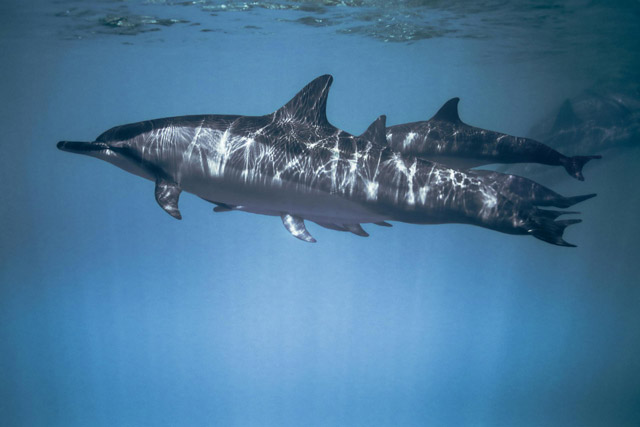
Fun Fact!
Dolphins in Montauk waters are known to form “super pods,” where hundreds of individuals come together for socializing or feeding—an incredible sight during a tour!
Seals in Montauk Waters
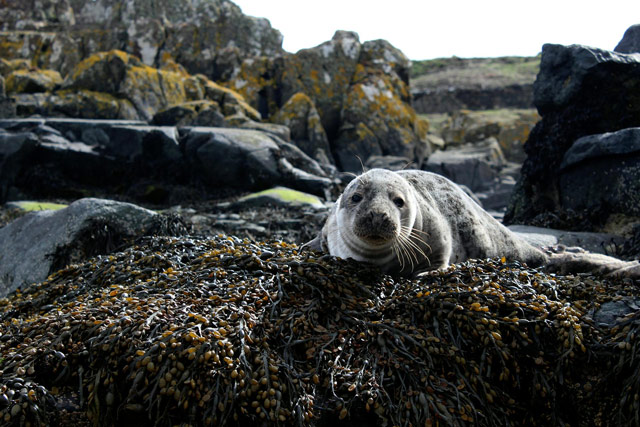
When I think about Montauk’s marine life beyond whales and dolphins, seals always come to mind. These playful and endearing creatures are a treat to observe, especially during the cooler months. There’s something magical about spotting them basking on rocky shores or gliding through the water with ease. For anyone visiting Montauk from late fall to early spring, seals are a must-see part of the experience!
Seal Migration Patterns
Seals migrate to Montauk’s waters during the late fall through early spring, drawn by the area’s abundant food sources and safe resting spots. As temperatures drop, Montauk becomes a temporary home for harbor and gray seals, two of the most common species. They love to haul out onto rocky outcrops or sandy beaches at low tide, soaking up the sun or resting between feeding sessions. It’s fascinating to witness how these animals adapt to their environment, thriving in conditions many of us find too chilly to even dip a toe into!
Where to Spot Seals
Montauk offers several fantastic spots for seal watching.
- Montauk Point State Park: This is my favorite place to watch seals. During a guided winter hike, I once spotted a group of harbor seals lounging on a sunlit rock—an unforgettable sight!
- Shadmoor State Park: This location offers panoramic views and a quieter, more secluded spot for observing seals in their natural habitat.
- Culloden Point: Another excellent spot, especially for those who prefer less-crowded areas. The seals here often lounge near the shoreline, making it easier to spot them.
For the best experience, bring binoculars or a spotting scope. Seals often relax in areas that aren’t directly accessible, but with a good lens, you can enjoy watching them without disturbing their peace.
Eco-Friendly Observation
Seals are naturally curious but also quite sensitive to human presence. Always maintain a safe distance—this is as much for their safety as it is for yours. Getting too close can stress them out or disrupt their natural behaviors. During one outing, I watched a young pup nervously glance at approaching onlookers, clearly uncomfortable. That moment reminded me of the importance of respecting wildlife.
Pro Tip!
The Marine Mammal Protection Act prohibits harassing, hunting, or disturbing marine mammals, so keep your distance. A good rule of thumb is to stay at least 150 feet away.
Seal Species to Watch For
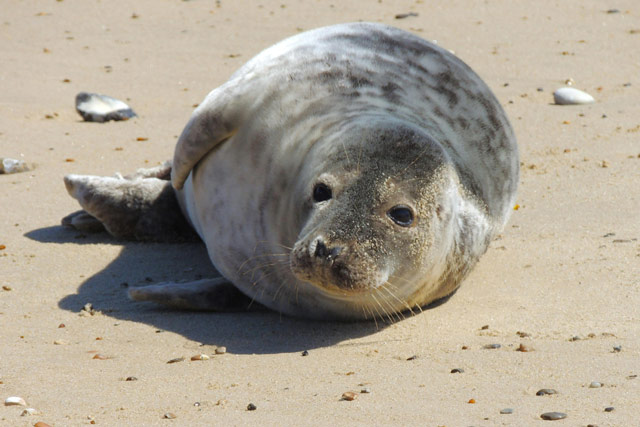
Harbor Seal
The harbor seal is the most frequently seen species in Montauk’s waters. They’re easy to recognize by their spotted coats, which range in color from silvery gray to brown. Harbor seals are relatively small, with adults typically weighing around 200 pounds. Their curious expressions often make me feel like they’re as intrigued by us as we are by them. Look for them basking on rocks during low tide, often in groups.
Fun Fact!
Harbor seals can dive to depths of over 1,500 feet and hold their breath for up to 30 minutes while hunting for fish and squid!
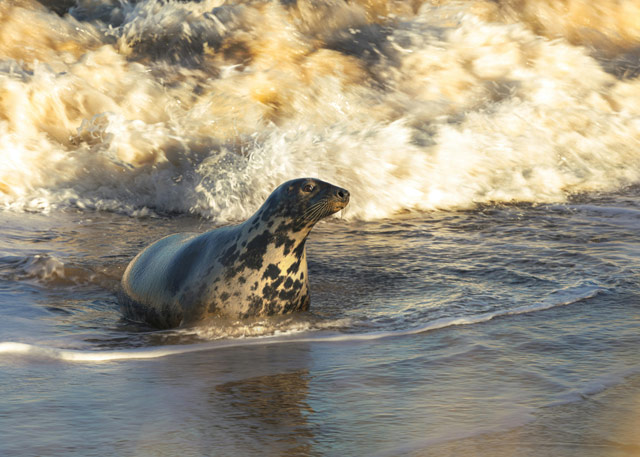
Gray Seal
Gray seals, often nicknamed “horseheads” due to their elongated snouts, are larger and more robust than harbor seals. These gentle giants can weigh up to 800 pounds, making them a striking sight. Despite their size, they share haul-out sites with harbor seals, creating a delightful mix of species. Their darker coats and distinctive features make them easy to identify among a group.
Fun Fact!
Gray seals have excellent vision underwater, even in low light, making them expert hunters in Montauk’s coastal waters.
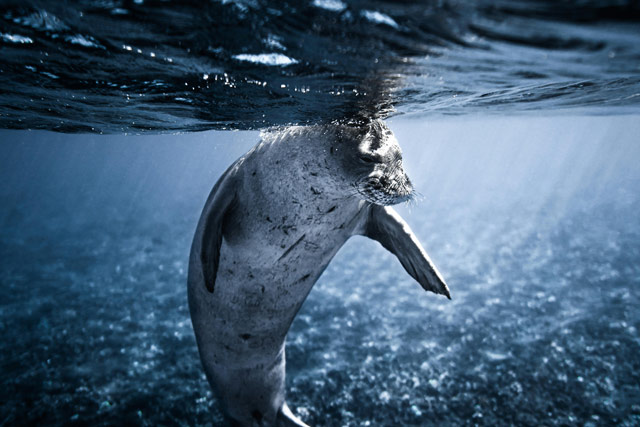
Ringed Seals (Rare Visitors)
Although uncommon, ringed seals occasionally make appearances in Montauk’s waters. These Arctic dwellers are smaller and more elusive than the other species but are a special treat to spot.
When to Watch Seals
Late fall through early spring is the prime seal-watching season in Montauk. On crisp, clear mornings, you’ll often find them soaking up the sun or gracefully diving into the water for a meal. Low tide is particularly good for seal watching, as they gather on exposed rocks and sandbanks.
Fun Fact!
Seals have a unique sleeping behavior called “bottling,” where they float upright in the water with just their heads above the surface. It looks like they’re bobbing like a bottle, hence the name!
Seals are a reminder of Montauk’s rich marine diversity, and watching them is a peaceful, heartwarming experience. They’ve become one of my favorite parts of exploring Montauk during the cooler months, offering a unique glimpse into the beauty of marine life beyond whales.
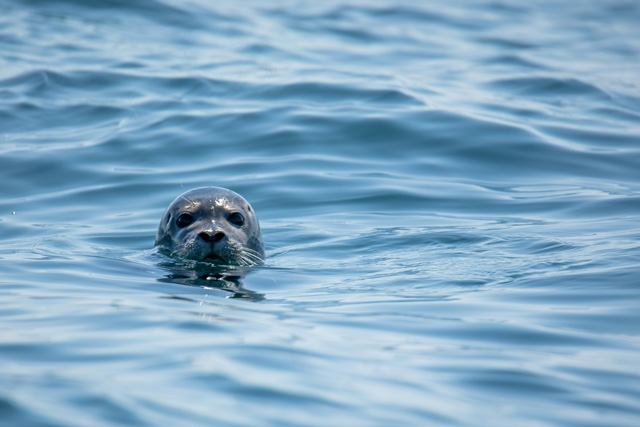
Birdwatching in Montauk: A Paradise for Avian Enthusiasts
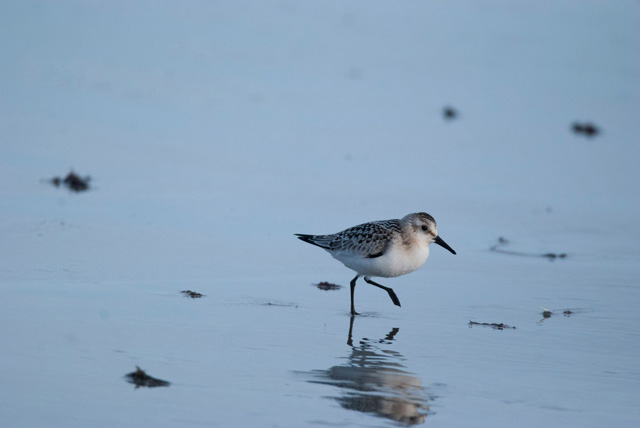
Montauk’s coastal ecosystem isn’t just about whales, dolphins, and seals—it’s also home to a vibrant array of bird species that make this destination a paradise for birdwatchers. Whether you’re an experienced birder or someone who just enjoys watching a flock of birds in flight, Montauk offers endless opportunities to connect with its avian residents. Every time I take my binoculars on a whale watching tour or stroll along Montauk’s beaches, I’m amazed by the diversity of birds that call this area home.
Pelagic Birds: The Sea’s Feathered Wonders
Pelagic birds, or seabirds, spend most of their lives on the open ocean, only coming to land to nest. In Montauk, you can spot species like shearwaters, petrels, and northern gannets during a whale watching tour. These birds often follow boats, diving gracefully into the water for fish or gliding effortlessly on the ocean breeze.
One of my favorite moments on a tour was watching a northern gannet dive from a dizzying height, hitting the water with pinpoint accuracy. These birds are built for the hunt, and their aerial displays are as captivating as any whale breach.
Shorebirds and Raptors: Coastal Beauties and Sky Kings
Montauk’s beaches and marshes are teeming with shorebirds like sandpipers and terns, while raptors such as ospreys and the occasional bald eagle patrol the skies above. I’ve spent many mornings at Montauk Point Lighthouse watching ospreys skillfully swoop down to snatch fish from the water. It’s a thrilling reminder of the intricate food web that sustains this coastal haven.
During migration seasons, Montauk’s shores come alive with even more bird species. Whether it’s the rhythmic pecking of sandpipers along the tide line or the commanding presence of a bald eagle perched in a tree, there’s always something to see.
Pro Tip!
For raptors like ospreys and eagles, visit early in the morning or late in the afternoon when they’re most active. The golden light also makes for spectacular photos!
Best Birdwatching Spots in Montauk
Montauk has no shortage of prime locations for birdwatching.
- Montauk Point Lighthouse: This iconic site offers sweeping views of the Atlantic and is a hotspot for observing pelagic birds and raptors.
- Fort Pond Bay: A quieter spot, perfect for watching wading birds and smaller shorebirds.
- Hither Hills State Park: Known for its varied habitats, this park is ideal for spotting songbirds, hawks, and even owls in the forested areas.
Whenever I visit these spots, I make sure to bring a notebook to jot down species I’ve seen and my trusty camera for capturing unforgettable moments.
Bird Species to Watch For
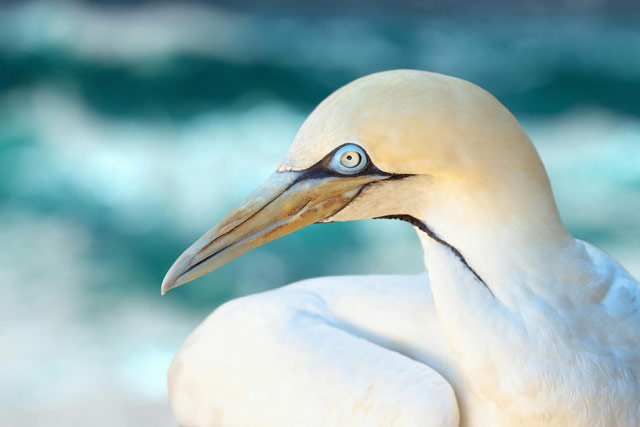
Northern Gannet
Northern gannets are a showstopper during whale and dolphin-watching tours. With their bright white plumage, black wingtips, and golden-hued heads, they’re a striking sight against Montauk’s blue waters. Their signature hunting style—plunging from heights of over 100 feet—never fails to impress.
Fun Fact!
Northern gannets have air sacs under their skin to cushion the impact of their high-speed dives. It’s like built-in armor for their hunting adventures!

Double-Crested Cormorant
These sleek, dark-feathered birds are a common sight along Montauk’s coastline. Often spotted drying their wings on rocky outcrops, cormorants are expert divers, using their webbed feet to navigate underwater in search of fish.
Fun Fact!
Unlike most birds, cormorants have feathers that aren’t fully waterproof, which helps them dive deeper. This is why you’ll often see them standing with their wings spread to dry in the sun.
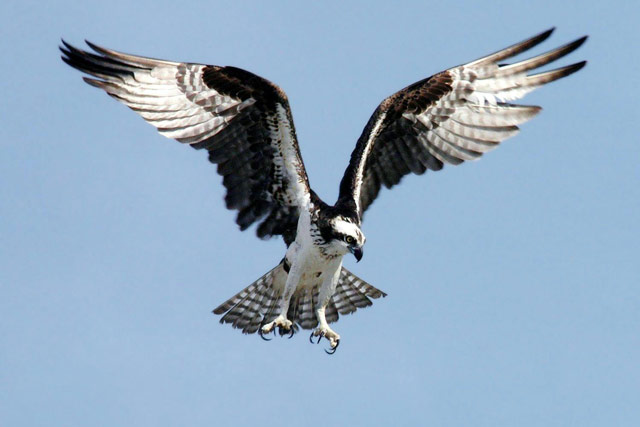
Osprey
Also known as the sea hawk, ospreys are among my favorite birds to watch in Montauk. Their fishing skills are unparalleled, and their nests, often built atop man-made platforms, are a common sight around the area.
Fun Fact!
Ospreys have a reversible toe that allows them to grip fish more securely—a feature that’s unique among raptors!
Bald Eagle
Though less common, spotting a bald eagle in Montauk is an unforgettable experience. Their imposing size and striking white head make them impossible to miss.
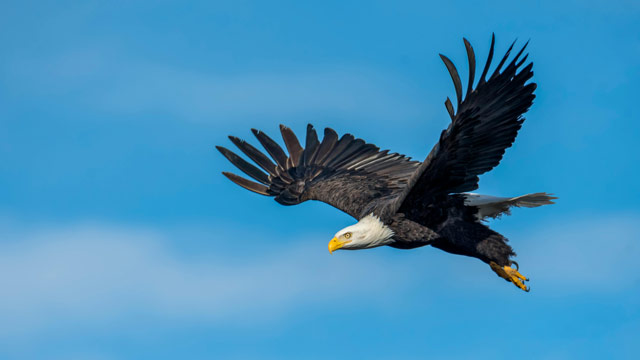
Tips for Birdwatching in Montauk
- Bring the Right Gear: Binoculars are a must for spotting distant pelagic birds, and a spotting scope is great for close-up views of shorebirds.
- Know the Seasons: Migration periods in spring and fall bring an influx of species, making these times especially rewarding for birdwatchers.
- Be Patient: Wildlife watching often requires a bit of stillness and quiet. Give the birds time to reveal themselves.
Montauk’s birdlife is a reflection of its rich and diverse ecosystems. From the open ocean to the sandy shores, these feathered residents add another layer of beauty to this incredible destination.
Fun Fact!
Northern gannets, often seen diving into Montauk’s waters, can hit speeds of 60 miles per hour when plunging into the ocean to catch fish.
Seasonal Variations in Marine Life
Montauk’s marine life changes with the seasons, offering unique experiences throughout the year:
- Spring: Spot migrating seals, dolphins, and early bird arrivals.
- Summer: Peak activity for dolphins and pelagic birds.
- Fall: Seals return, and bird migrations ramp up.
- Winter: Seals are the main attraction, with a quieter yet serene marine environment.
Responsible Wildlife Watching
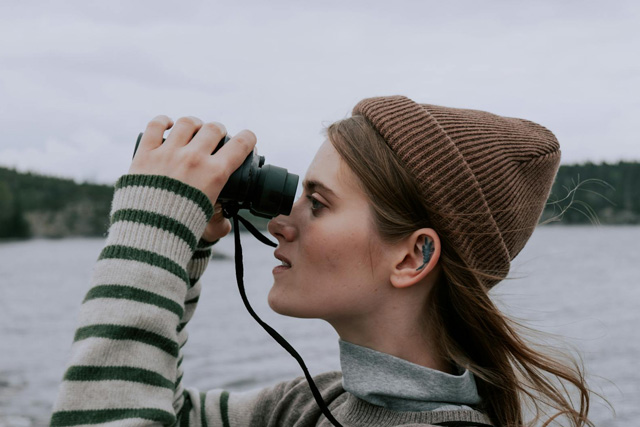
1. Keep a Respectful Distance
Marine mammals rely on maintaining their natural routines, such as feeding, mating, and migrating. Getting too close can interrupt these activities, potentially leading to stress or injury. Tour boats in Montauk are required to follow regulations like the Marine Mammal Protection Act, that ensure no vessel comes too close to whales or dolphins. For whales, the guideline is often staying at least 100 feet away.
2. Avoid Loud Noises
Sound is a primary communication tool for many marine animals. For example, dolphins use echolocation to navigate and hunt, while whales sing to communicate. Sudden noises can scare marine life. Keep your voice low and avoid clapping, whistling, or banging on the sides of boats. Sound travels far underwater, and even small disturbances can stress animals like dolphins and seals, and potentially drive them away from their feeding grounds.
3. Never Feed Wildlife
might seem harmless, but it often results in animals associating humans with food and alters their natural foraging behaviors. This increases the risk of boat collisions, dependency, and even health issues due to inappropriate diets.
4. Stay on Designated Viewing Paths
Designated paths and viewing platforms reduce the risk of trampling delicate ecosystems. If you’re watching from land, stick to marked trails or platforms to avoid disturbing nesting birds or seals resting on the shore. Many parks in Montauk have designated paths for viewing marine life safely.
5. Minimize Environmental Impact
Always clean up after yourself and avoid leaving behind litter. Even small trash items can have devastating effects on marine animals. Discarded plastics and other waste are among the biggest threats to marine life. Seabirds often mistake plastic fragments for food, and seals or dolphins can get entangled in fishing lines, leading to severe injuries or death.
6. Avoid Using Drones Near Wildlife
Drones can disturb marine life, particularly birds and mammals, by mimicking predators or creating loud noises. Avoid flying drones near whale watching areas unless explicitly permitted and done responsibly.
7. Support Conservation Efforts
Organizations like the Coastal Research and Education Society of Long Island (CRESLI) conduct vital research and outreach programs. Supporting these groups through donations, volunteering, or education efforts ensures that wildlife continues to thrive for future generations.
8. Choose Eco-Friendly Tours (New Tip)
Eco-friendly operators not only prioritize wildlife safety but also educate tourists on marine conservation. Select tour operators that follow sustainable practices, such as minimizing fuel emissions, using smaller boats, and adhering to wildlife protection guidelines. These operators often contribute part of their profits to conservation initiatives.
Conclusion
While majestic whales undoubtedly steal the show in Montauk, the surrounding waters offer a vibrant tapestry of marine life that’s sure to captivate any visitor. From playful dolphins and curious seals to soaring birds and an abundance of fish, every trip to the coastline reveals a new wonder.
Montauk offers an unforgettable experience for all ages. So, pack your binoculars, embrace the fresh ocean air, and prepare to be amazed by the diverse ecosystems that thrive in this coastal haven.

